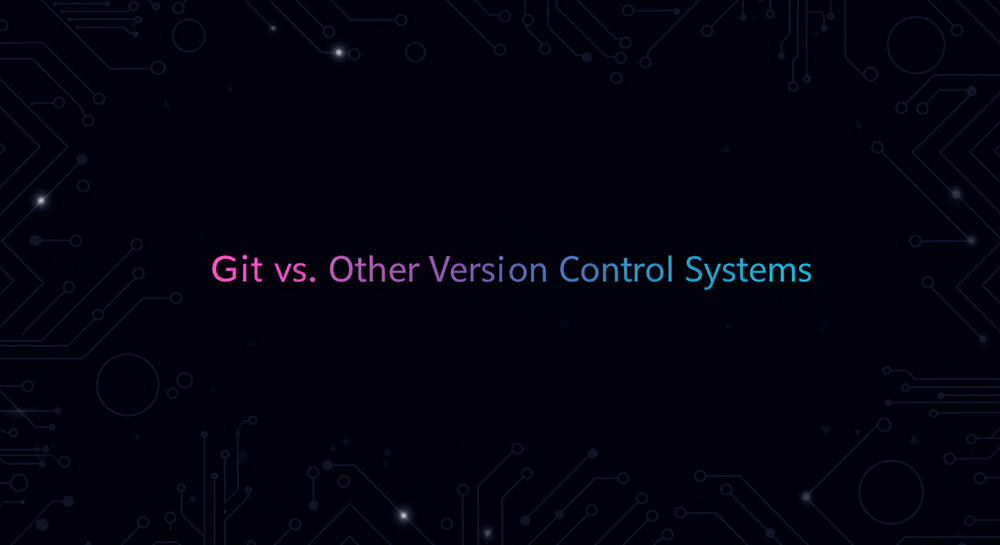You can get training on this article, which dives into the intricate world of Git, a powerful version control system that has revolutionized how developers manage their code. Whether you're an intermediate developer looking to deepen your understanding or a professional seeking to refine your workflow, this article is designed to provide you with a comprehensive overview of Git, its functionalities, and its significance in software development.
Definition of Git
Git is a distributed version control system (DVCS) created by Linus Torvalds in 2005. It is designed to handle everything from small to very large projects with speed and efficiency. Unlike traditional version control systems, Git allows developers to work on their local copies of a codebase, enabling them to commit changes, branch, and merge without needing constant access to a central server. This decentralization enhances collaboration among developers and significantly improves workflow flexibility.
Understanding Repositories
At the heart of Git is the repository, often referred to as a repo. A Git repository can be local (on your machine) or remote (on a server).
- Local Repository: This is where you store your project files and the entire history of changes made to those files. You can create a local repository by running the command:
git init- Remote Repository: This is typically hosted on platforms like GitHub, GitLab, or Bitbucket. Remote repositories facilitate collaboration, allowing multiple developers to work on the same project from different locations.
Each repository contains a .git directory that holds all the metadata for the version control, including commits, branches, and tags.
Why Use Git?
Git is favored for several reasons:
- Efficiency: Git is designed for speed. Operations like committing, branching, and merging are all optimized for performance.
- Branching and Merging: Git’s branching model allows developers to create, manage, and delete branches easily. This supports isolated development, making it easy to experiment without affecting the main codebase.
- Distributed Nature: Each developer has a full copy of the repository, meaning they can work offline and commit changes without needing to be connected to a central server.
- Data Integrity: Git uses a SHA-1 hashing algorithm to ensure the integrity of your data. Each commit is identified by a unique hash, making it easy to track changes and revert to previous states if necessary.
- Collaboration: With features like pull requests and merge requests, Git simplifies collaborative development, allowing teams to review and integrate changes effectively.
History of Git
Git's creation stemmed from the need for a robust version control system following the discontinuation of BitKeeper, which was used for Linux kernel development. Torvalds aimed to develop a system that could manage large projects efficiently without compromising on performance. Since its initial release, Git has undergone significant evolution, introducing features like submodules, hooks, and improved branching capabilities. Today, Git is the most widely used version control system in the world, powering countless open-source and commercial projects.
How Git Works
Understanding how Git operates is crucial for effective use. Here are the key concepts:
- Commits: A commit is a snapshot of your project at a particular point in time. Each commit records changes and includes metadata such as the author's name, email, and timestamp. You can create a commit using:
git commit -m "Your commit message"- Branches: Branching allows you to diverge from the main line of development and continue to work independently. You can create a new branch with:
git branch new-branch-name- Merging: Once your changes are ready, you can merge them back into the main branch (usually called
mainormaster) using:
git merge branch-name- Staging Area: Before committing changes, you can stage them using:
git add filenameThis allows you to prepare commits selectively, ensuring that only the desired changes are included.
Git vs. Other Version Control Systems
While Git is a powerful tool, it's essential to understand how it compares with other version control systems (VCS):
- Subversion (SVN): SVN is a centralized version control system, meaning it relies on a single central repository. This can lead to bottlenecks as all operations require server access, unlike Git's distributed nature.
- Mercurial: Like Git, Mercurial is a distributed VCS. However, Git has gained more popularity and has a more extensive ecosystem of tools and integrations.
- CVS: Concurrent Versions System (CVS) is an older version control system that lacks many features found in modern systems like Git, such as branching and merging capabilities.
Each of these systems has its strengths, but Git’s flexibility, efficiency, and robust feature set often make it the preferred choice among developers.
Common Use Cases for Git
Git is versatile and can be applied in various scenarios:
- Open Source Projects: Many open-source projects use Git to manage contributions from developers worldwide. Platforms like GitHub facilitate collaboration through pull requests and code reviews.
- Team Collaboration: In development teams, Git enables multiple developers to work on different features simultaneously without interfering with each other’s work.
- Continuous Integration/Continuous Deployment (CI/CD): Git integrates seamlessly with CI/CD tools, allowing automated testing and deployment of code changes.
- Versioning Documentation: Git can also be used to version control documentation, ensuring changes are tracked and can be rolled back if necessary.
Summary
In conclusion, Git is a powerful, flexible, and efficient version control system that has become the backbone of modern software development. Its distributed architecture, coupled with features like branching, merging, and data integrity, makes it an invaluable tool for developers. As you delve deeper into Git, you'll discover its vast capabilities and how it can streamline your development workflow, making collaboration and version management more manageable than ever before.
Whether you're maintaining a small personal project or contributing to a large enterprise application, mastering Git equips you with the skills necessary to navigate the complexities of version control effectively. Embrace Git today, and enhance your development processes for the better!
Last Update: 21 Dec, 2024

